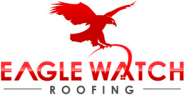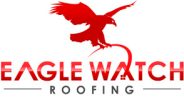Commercial Roofing in Atlanta: Materials, Maintenance & Cost-Saving Tips
Hey there! If you’re a business owner or property manager in Atlanta, you know how important a solid, reliable roof is for your commercial building.
After all, your roof is what protects everything underneath — your employees, your equipment, your inventory, and your investment.
But with so many roofing materials, maintenance routines, and costs to consider, it can get confusing.
Don’t worry — I’ve got you covered.
Today, I’m going to break down the basics of commercial roofing in Atlanta, including popular materials, how to keep your roof in great shape, and some handy tips to save you money in the long run. Let’s jump right in!
From metal to membrane roofs, knowing the benefits of each type is essential—especially when considering commercial roof repair or commercial roofing installation in the future.
Popular Commercial Roofing Materials: What Works Best in Atlanta?
First things first — what type of roofing materials should you think about? Commercial roofing isn’t one-size-fits-all.
Depending on your building type, budget, and climate, some materials may suit you better than others. Here are the top choices you’ll see around Atlanta:
Metal Roofing — Tough and Long-Lasting
Metal roofs have come a long way.
They’re super durable and built to withstand Georgia’s sometimes wild weather — think heavy rain, wind, and even hail.
Modern metal roofs are resistant to denting and can last up to 40 years without rust showing up.
You’ll find metal roofs made from steel, aluminum, and zinc.
The style matters too — there are exposed-fastener systems, where you can see the screws, and hidden-fastener systems that give a sleeker look.
Just a heads-up: metal roofs are better for low-slope roofs rather than flat ones because water drainage needs to be good to prevent pooling.
Proper planning during commercial roofing installation ensures the right metal system is chosen for optimal performance and longevity.
Why choose metal roofing?
- Fire-resistant
- Wind-resistant
- Highly durable and strong against the elements
- Extremely long-lasting
- Eco-friendly and energy-efficient (helps cut cooling bills!)
- Versatile for different building types
BUR (Built-Up Roofing) — Old School but Reliable
BUR has been around since the 1800s and is known for its gravelly, textured look.
It’s a layering system — multiple layers of tar and gravel — making it tough and waterproof.
While it’s not the cheapest or the most modern choice, BUR can last 50 years or more with the right care.
Benefits of BUR:
- Excellent waterproofing
- UV resistant
- Low maintenance
- Durable
- Can be cost-flexible depending on the number of layers
TPO (Thermoplastic Polyolefin) — The Flat Roof Favorite
If your commercial building has a flat roof, TPO is a popular option.
It’s a single-ply roofing membrane that comes in large sheets, usually bright white to reflect the sun and keep your building cooler — a big win in the Atlanta heat!
TPO is synthetic rubber reinforced with scrim, giving it good strength and resistance to oils, chemicals, and UV rays. It’s built to last 10 to 25 years.
What makes TPO great?
- Highly durable and fire resistant
- Wind resistant and UV resistant
- Resists chemicals, bacteria, algae, and dirt
- Energy efficient — keeps energy bills down!
PVC (Polyvinyl Chloride) — Strong and Long-Lasting
PVC looks similar to TPO but is a bit more expensive upfront because of its hot air welded seams.
These seams add strength and prevent leaks better, which means fewer repairs and a longer lifespan — typically 15 to 30 years.
Why consider PVC?
- Resistant to chemicals and weather
- Fire and wind resistant
- Long service life
- Eco-friendly
- Strong and reliable for flat roofs
Spray Polyurethane Foam (SPF) — Lightweight and Seamless
SPF roofing isn’t as widely known but has been around for over 40 years.
It starts as a liquid and sprays on, expanding 20 times its size to create a seamless, waterproof surface.
It’s super lightweight and can last over 50 years if installed well.
It’s also a great option for commercial roof repair projects thanks to its ease of application and ability to cover existing surfaces seamlessly.
Benefits of SPF:
- Highly durable and waterproof
- Energy efficient (great insulation!)
- Easy to maintain
- Can be applied on any roof slope
- Seals tightly around obstacles and edges
Maintenance Tips to Keep Your Commercial Roof in Top Shape
Now that you know your materials, let’s talk about maintenance tips for commercial roofs.
Taking care of your roof isn’t just about keeping it looking good — it’s about protecting your building and saving yourself from costly repairs down the road.
Schedule Regular Inspections

Experts recommend checking your roof at least twice a year — ideally in spring and fall. Inspections help catch small problems before they turn into big headaches.
Look for clogged drains, cracks, punctures, or physical damage.
Atlanta’s seasonal weather changes make these inspections even more critical, especially after storms or the winter months.
As spring arrives, it’s the perfect time to check for any winter damage, clean out gutters, remove debris from the roof surface, and inspect shingles for cracks or lifting.
Look for signs of water damage in your attic or ceilings, and ensure flashing around vents and chimneys is secure. Regular spring maintenance helps prevent costly repairs and extends the life of your roof.
Keep the Roof Clean
Leaves, dirt, trash, moss, and other debris can clog gutters and drains, causing water to pool and damage your roof.
Cleaning regularly prevents this buildup. In winter, you might need to clear snow, depending on your building.
Even cleaning out drains and downspouts is a simple step that can save you tons of money.
Fix Issues Right Away
If you spot damage — whether from storms, wear and tear, or maintenance work — don’t wait.
Prompt repairs keep your roof safe and extend its life. Many manufacturers require you to report leaks immediately to keep your warranty valid.
Trim Overhanging Branches
Tree limbs that hang over your roof can be trouble.
They drop leaves and nuts, making cleaning harder, and large branches can cause physical damage if they fall.
Plus, keeping branches away helps prevent animals and insects from nesting.
Limit Roof Traffic
Too many footsteps on the roof can cause wear and tear.
Restrict access to trusted professionals only, and consider installing walkway pads in areas with unavoidable foot traffic.
What Affects the Cost of Commercial Roofing in Atlanta?
Let’s be real — cost is a big factor for every commercial roofing project. Understanding what drives the price can help you make smart decisions.
Materials and Roofing System
Obviously, the material you choose impacts the cost a lot.
Metal roofs may cost more upfront but save you money with longevity and energy efficiency.
Single-ply membranes like TPO or PVC vary in price depending on thickness and quality.
BUR can be costly because of multiple layers but offers great durability.
Don’t forget about insulation, adhesives, fasteners, and other accessories — they all add to the price but are essential for a watertight roof.
Roof Size
Bigger roofs need more materials and labor, so they cost more in total.
But interestingly, the price per square foot usually goes down as the roof size increases.
Bulk material orders and longer work periods make bigger projects more efficient.
Roof Pitch (Slope)
Most commercial roofs are low-slope or flat, but if your roof has a steep pitch, expect higher costs.
Steeper roofs are harder and riskier to work on, so contractors charge more for the extra safety precautions and effort.
Building Height
Taller buildings cost more to roof because getting materials up high is tricky.
You might need cranes, hoists, or elevators, all of which add labor and equipment costs.
Labor and Installation Method
Labor is a major piece of the puzzle. Removing old roofs, prepping surfaces, and installing new ones take time and skill.
The way your roof is attached matters too — ballasted systems (using rocks) are cheapest, mechanically attached roofs cost more, and fully adhered systems with adhesives tend to be the most expensive.
Existing Roof Condition
If your current roof is in bad shape and needs complete removal, expect higher costs.
Minor repairs before installing a new roof might save you money, but full replacements always cost more.
Energy Efficiency
Energy-efficient materials like reflective metal or white single-ply membranes may cost a bit more upfront but help reduce your building’s cooling costs in the long run — a smart investment in sunny Atlanta!
Location and Regional Factors
Where your building is located matters too.
Busy cities like Atlanta may require special permits, street closures, or crane rentals, which increase costs.
Rural areas might be cheaper unless they’re hard to access.
Also, construction costs vary by region.
In places with a higher cost of living, expect roofing to be pricier.
Final Thoughts: How to Save Money and Protect Your Roof
Roofing projects can feel overwhelming, but a little planning and care go a long way.
- Choose the right materials for your building and climate. Don’t just go cheap; think long term.
- Keep up with inspections and maintenance — it’s cheaper than replacing your roof early.
- Address issues fast before they turn into major damage.
- Trim trees and limit roof traffic to prevent unnecessary wear.
- Work with reputable contractors who understand commercial roofing in Atlanta.
- Consider energy-efficient options that pay off in lower utility bills.
Taking these steps will help your commercial roof last longer, protect your business, and save you money over time.
Eagle Watch Roofing began its journey in 1999 as a home improvement company, originally offering services in roofing, siding, and replacement windows.
Over time, we refined our focus to specialize exclusively in roofing and gutter systems to deliver the highest level of performance and expertise to our customers.
Our team’s experience is unmatched. The father-and-son ownership brings over 40 years of combined industry knowledge.
Both are HAAG Engineering certified roofing installers and certified installers with leading manufacturers like GAF, Owens Corning, and CertainTeed.
This deep expertise is shared with every representative who visits your home—ensuring you work with professionals who truly understand the craft.
Simply put, we know roofing—and we’re ready to prove it to you.
FAQs
What is the most durable type of commercial roofing?
Metal roofing is among the most durable options. It resists fire, wind, and denting, and can last up to 40 years with minimal maintenance. Other long-lasting options include BUR (Built-Up Roof) and Spray Polyurethane Foam (SPF), which can also exceed 50 years with proper care.
What’s the difference between TPO and PVC roofing?
Both are single-ply membranes with similar white reflective surfaces, but PVC is stronger due to its hot-air welded seams. TPO is newer, more affordable, and great for resisting UV, chemicals, and punctures. PVC offers similar benefits but has a longer track record and slightly higher cost.
Is BUR roofing still a good option today?
Yes, BUR systems are still a viable choice, especially for flat or low-slope roofs requiring excellent waterproofing and durability. However, they are less commonly installed today due to labor-intensive and potentially unsafe installation practices.
Which roofing systems are best for flat roofs?
TPO, PVC, EPDM, and BUR are excellent for flat or low-slope commercial roofs. These systems are designed to handle ponding water and provide insulation and UV protection.

